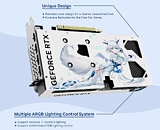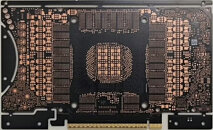
NVIDIA Renames GeForce RTX 5090DD to RTX 5090D v2
NVIDIA has quietly engineered a third variant of its flagship GPU in response to new US export regulations, aiming to maintain performance while avoiding restrictions. A few weeks ago, we got leaks about the GeForce RTX 5090DD, which was supposed to be a new version based on the modified RTX 5090D. The initially released GeForce RTX 5090D was designed to comply with the Department of Commerce's updated rules while delivering virtually identical results to its unrestricted counterpart in both gaming and synthetic benchmarks. Now, the newly named RTX 5090D v2 features the same 21,760 CUDA cores and a 575 W power draw, ensuring that the core Blackwell architecture performs as users would expect, albeit with a reduced 24 GB VRAM buffer.
NVIDIA plans to introduce an updated RTX 5090D v2 model in August. According to reliable industry sources, this refresh will feature 24 GB of GDDR7 memory on a 384-bit bus, down from the original 512-bit interface, while preserving overall thermal and computational characteristics. For most gamers, the reduced VRAM capacity is unlikely to be noticeable, as only a handful of titles require more than 24 GB of VRAM. Ultimately, the success of the v2 will depend on whether it reaches the market at a price point that aligns with the expectations of its flagship. Given that the target market is China, we have to wait for sales and performance figures first. According to a well-known leaker, kopite7kimi, they noted that there is some surprise, indicating that NVIDIA has made a significant change to comply with export regulations, so it could be a firmware update preventing these cards from running AI workloads.
NVIDIA plans to introduce an updated RTX 5090D v2 model in August. According to reliable industry sources, this refresh will feature 24 GB of GDDR7 memory on a 384-bit bus, down from the original 512-bit interface, while preserving overall thermal and computational characteristics. For most gamers, the reduced VRAM capacity is unlikely to be noticeable, as only a handful of titles require more than 24 GB of VRAM. Ultimately, the success of the v2 will depend on whether it reaches the market at a price point that aligns with the expectations of its flagship. Given that the target market is China, we have to wait for sales and performance figures first. According to a well-known leaker, kopite7kimi, they noted that there is some surprise, indicating that NVIDIA has made a significant change to comply with export regulations, so it could be a firmware update preventing these cards from running AI workloads.

































































